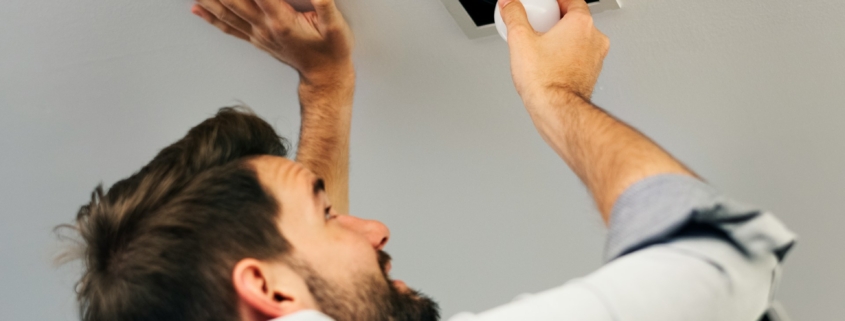Simple Tips for Installing LED Lights in Your House
LED lights are a fantastic choice for brightening up your home while saving on energy costs. They last longer than traditional bulbs and are much more efficient. This means you can enjoy a well-lit space and lower electricity bills. In this article, we’ll walk you through everything from picking the right LED lights to installing and maintaining them.
Understanding how to choose the right bulbs can make a big difference. You’ll need to think about the type of light, its brightness, and even the colour. Different areas of your home might need different kinds of LED lights. For instance, you might want brighter lights in your kitchen and softer ones in your bedroom. We’ll help you figure out what’s best for each room.
Choosing the Right LED Lights for Your Home
There are many types of LED lights available, each serving a different purpose. Some common types include standard bulbs, recessed lights, and LED strips. Standard bulbs are great for general lighting and can replace traditional incandescent bulbs. Recessed lights are installed into the ceiling and are perfect for providing even lighting across a room. LED strips are flexible and can be used for accent lighting, such as under cabinets or behind TVs.
Each type of LED light has its pros and cons. Standard LED bulbs are versatile and easy to replace but may not offer the same sleek look as recessed lights. Recessed lights create a clean, modern appearance but require more installation effort. LED strips are highly flexible and can be installed in tight spaces, but they may not provide as much light as other options.
When selecting LED lights, it’s important to pay attention to wattage and lumens. Wattage tells you how much energy the bulb uses, while lumens indicate how bright the light will be. For example, a 9-watt LED bulb can produce the same light as a 60-watt incandescent bulb. It’s a good idea to check the lumens to ensure the light is bright enough for your needs. A living room might need around 1,500 to 3,000 lumens, while a bedroom may only need 1,000 to 2,000 lumens.
The colour temperature of LED lights is another factor to consider. Colour temperature is measured in Kelvins (K) and affects the ambience of your space. Warm white light (around 2,700K to 3,000K) creates a cozy atmosphere, making it ideal for living rooms and bedrooms. Cool white light (around 4,000K to 5,000K) is brighter and more energising, suitable for kitchens and workspaces. Daylight bulbs (6,000K to 6,500K) mimic natural light and are often used in areas where you’ll be doing tasks that require good visibility.
Tools and Materials You’ll Need
Before starting your LED lighting installation, gathering all the necessary tools and materials is essential. Having everything ready will make the process smoother and safer. Here’s a list of what you’ll typically need:
– Screwdrivers (flathead and Phillips)
– Wire strippers
– Electrical tape
– Voltage tester
– Ladder
– Measuring tape
– Pencil for marking
– LED light fixtures or bulbs
– Wire nuts
– Mounting hardware (screws, brackets)
Gathering essential materials before you begin is just as important. Ensure you have the following on hand:
– LED lights (bulbs, strips, or fixtures as needed)
– Electrical wiring (if replacing old fixtures)
– Light switch cover plates (if replacing existing switches)
– Cable ties for organising wires
Safety is crucial when working with electricity. Always have the right safety gear:
– Safety glasses to protect your eyes from debris
– Insulated gloves to prevent electrical shocks
– A face mask if you’re working in a dusty area
With all these tools, materials, and safety gear ready, you’ll be well-prepared to tackle your LED light installation.
Step-by-Step Guide to Installing LED Lights
Installing LED lights can be straightforward if you follow these steps carefully.
First, always turn off the power at the circuit breaker before starting any electrical work. Use a voltage tester to double-check that the power is off.
For ceiling lights:
- Remove the old fixture by unscrewing it and disconnecting the wires.
- Connect the new LED fixture’s wires to the existing wires in your ceiling. Usually, this means matching black to black, white to white, and ground to ground (green or bare wire).
- Secure the connections with wire nuts and wrap them with electrical tape.
- Attach the fixture to the ceiling using the provided mounting hardware.
- Turn the power back on and test the light.
For under-cabinet LED strips:
- Measure the area where you’ll install the strips and cut them to the correct length if necessary.
- Peel off the adhesive backing and stick the strips under the cabinets.
- Connect the strips to the power supply and plug it in.
- Use the remote or switch to test the lights.
Be sure to follow the specific instructions that come with your LED lights, as different products might have slight variations in installation methods.
After installing, turn the power back on and test your lights to ensure they work correctly. If the lights don’t turn on, double-check all connections and look for any loose wires.
Tips for Maintaining Your LED Lights
Once your LED lights are installed, regular maintenance will help them last longer.
– Dust your lights regularly. Dust can accumulate on light fixtures, reducing their brightness. Use a soft, dry cloth to clean the bulbs and fixtures.
– For more thorough cleaning, use a damp cloth with mild soap solution for fixtures, but never use harsh chemicals as they can damage the lights.
– Check the connections. Over time, connections can loosen. Make sure to tighten any loose screws or wire nuts.
– Monitor for flickering or dimming lights. If your LED lights start to flicker or dim, it could indicate a problem with the electrical wiring or the LED driver. Try replacing the bulb first. If the problem persists, you may need to check the wiring or get a new driver.
Conclusion
Installing and maintaining LED lights can be an easy and rewarding project that enhances the beauty and efficiency of your home. You can enjoy bright, long-lasting lighting by choosing the right LED lights, gathering the necessary tools and materials, and following a clear installation process. Remember to perform regular maintenance to keep your lights in excellent condition.
If you run into any challenges or need professional assistance, our team at Thomas Blake Electrical is here to help. We provide expert electric services, ensuring your home stays well-lit and safe. Whether it’s for simple installations or complex repairs, feel free to contact us for all your lighting needs.
Brighten your home today with our help!



